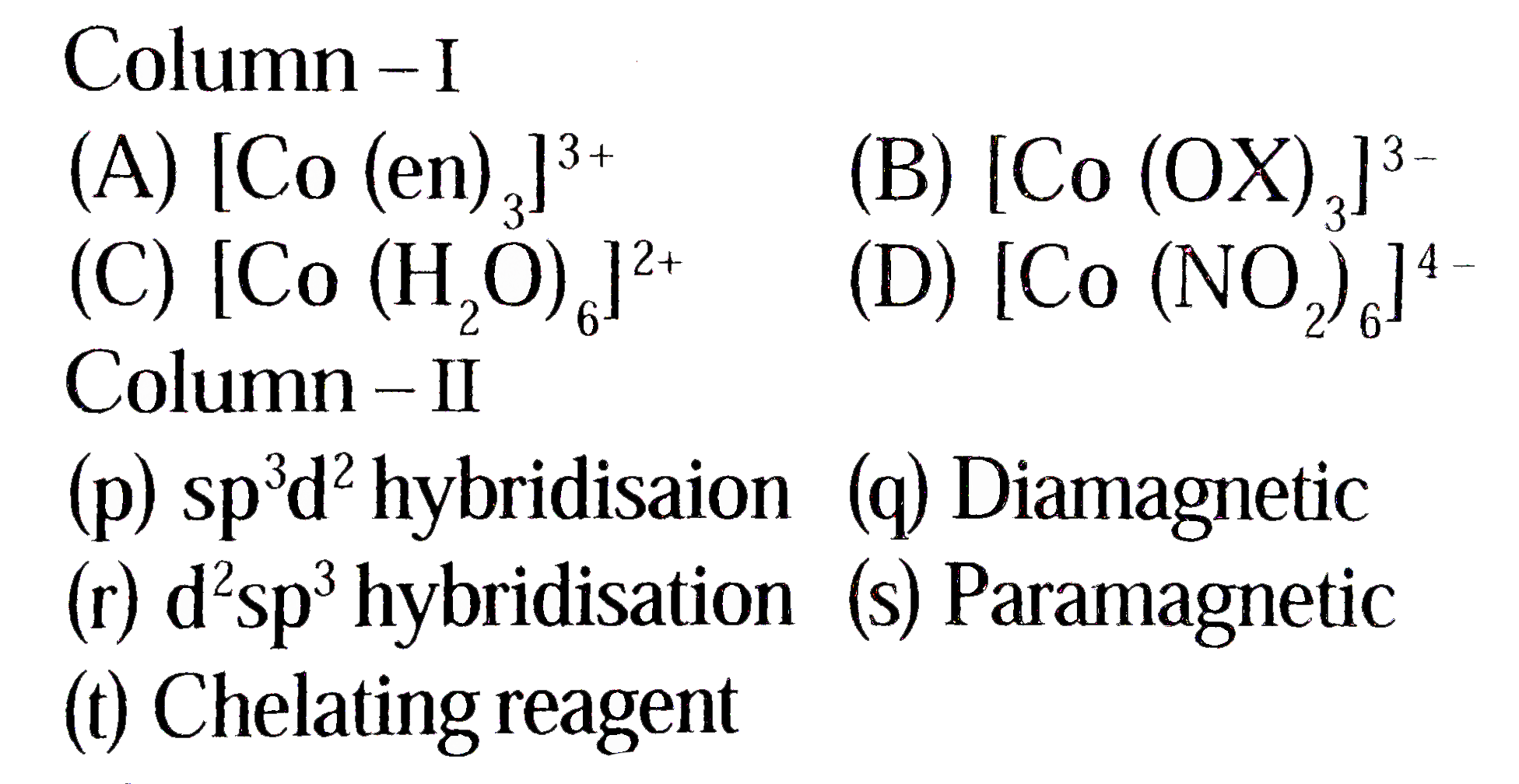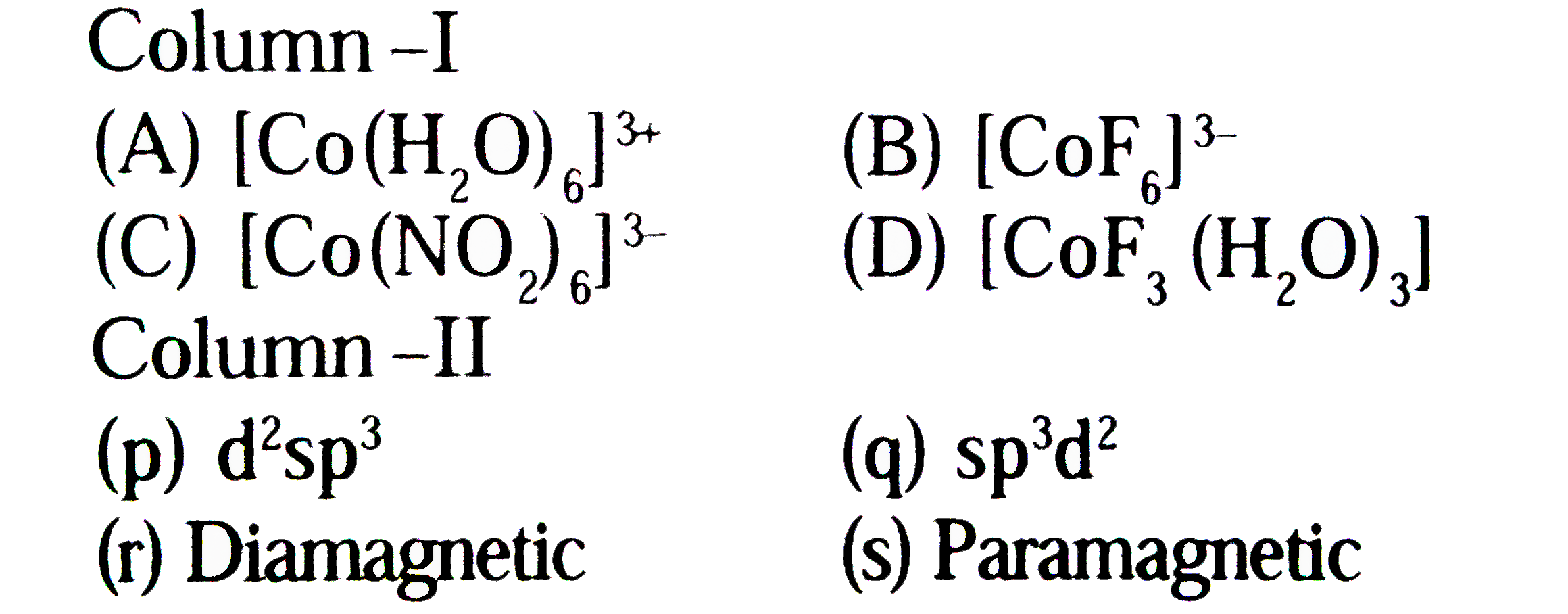Match the complexes listed in column-I with characteristic (s)/type of hybridisation olisted in column-II.

(A-p.u) , (B-s),(C-s,t),(D-y), (E-q,r).
(A) Co3+→3d6

bidentate ligands and thus from chelate.
(B) Co3+→3d6

F− weak ligand
(C ) So oxidation state of Cr is (I) and Cr+ has d5 configuration. Hence hydridisation is d2sp3as two empy d-orbitals are available with strong field ligands CN− and VH3 complex is paramagnetic
(D) Co3+,3d6 configuratiion has greater CFSE. With strong field ligands NH3 pairing of electrons takes place and thus hybridisation is d2sp3 and diamagnetic
(E) Mn3+→

therefore , μ=√2(2+)=2.84B.M.
Topper's Solved these Questions
- BOOK - NARAYNACHAPTER - COORDINATION COMPLEXESEXERCISE - EXERCISE-913videos
COORDINATION COMPLEXES
- BOOK - NARAYNACHAPTER - COORDINATION COMPLEXESEXERCISE - Comprehension-13videos
COORDINATION COMPLEXES
- BOOK - NARAYNACHAPTER - COORDINATION COMPLEXESEXERCISE - EXERCISE-75videos
COORDINATION COMPLEXES
- BOOK - NARAYNACHAPTER - CO-ORDINATE COMPOUNDS EXERCISE - Exercise-460videos
CO-ORDINATE COMPOUNDS
- BOOK - NARAYNACHAPTER - D - BLOCK ELEMENTSEXERCISE - CHECK YOUR GRASP7videos
D - BLOCK ELEMENTS
Similar Questions
Knowledge Check
- Question 1 - Select One
Match the complexed listed column −I with type of hybridisation listed in column −II and select the correct answer using the code given below the lists :
Column−IColumn−II(a)[AuF4]−(p) dsp2hybridisation(b)[Cu(CN)4]3−(q) sp3hybridisation(c)[Co(NH3)6]3+(r) sp3d2hybridisation(d)[Fe(H2O)5NO]2+(s) d2sp3hybridisationA(a)(b)(c)(d)pqsrB(a)(b)(c)(d)psqrC(a)(b)(c)(d)qprsD(a)(b)(c)(d)sqpr
Match the complexes in Column-I with characteristic(s)/ type of hybridisation listed in column-II
 View Solution
View SolutionMatch the compounds listed in column-I with characteristic type of reaction listed in column-II
 View Solution
View SolutionMatch the complexes listed in column-I with characteristic(s) listed in column-II.
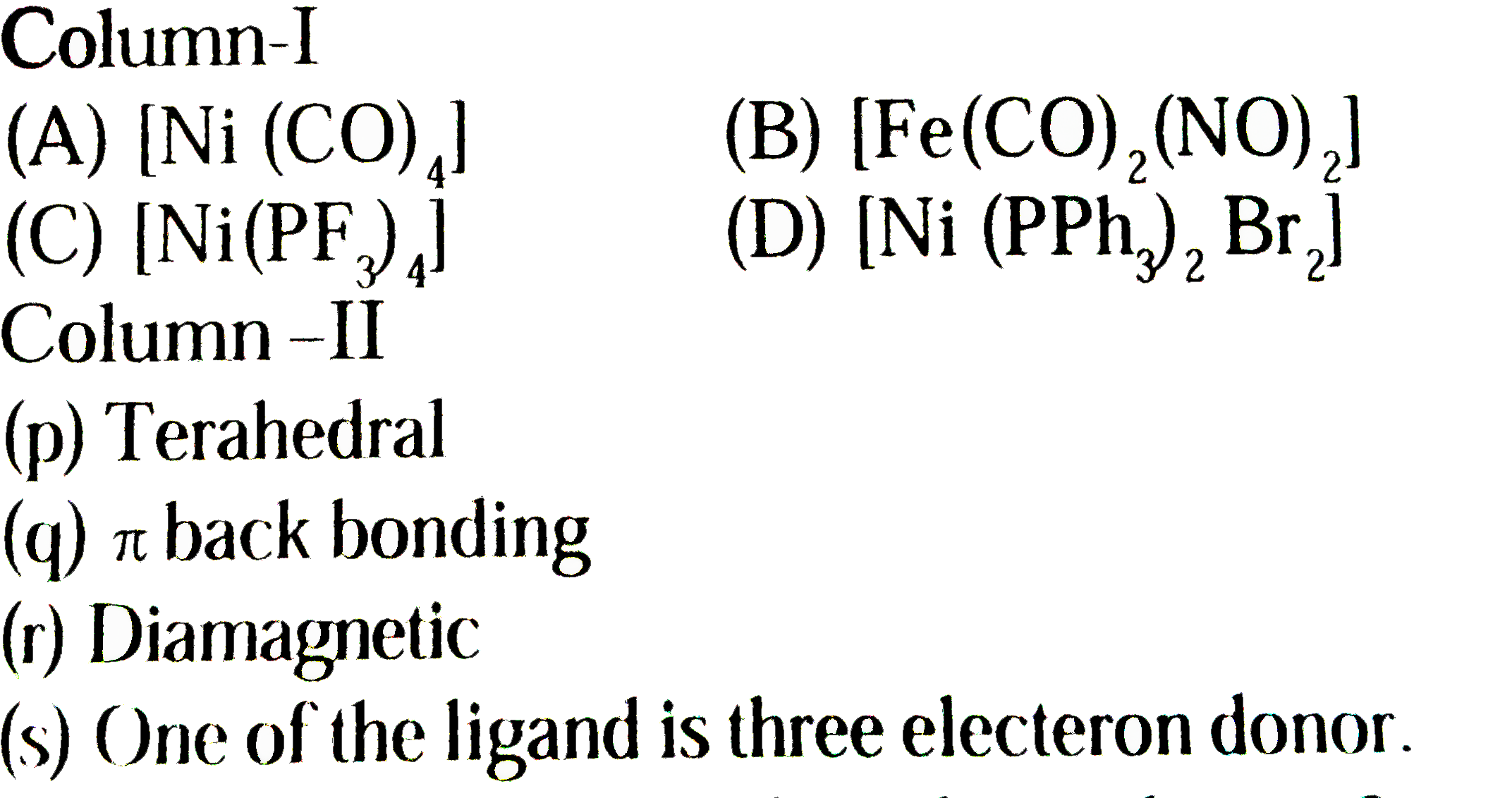 View Solution
View SolutionMatch the reactions listed in column-I with the characteristic (s) of the products listed in column-II.
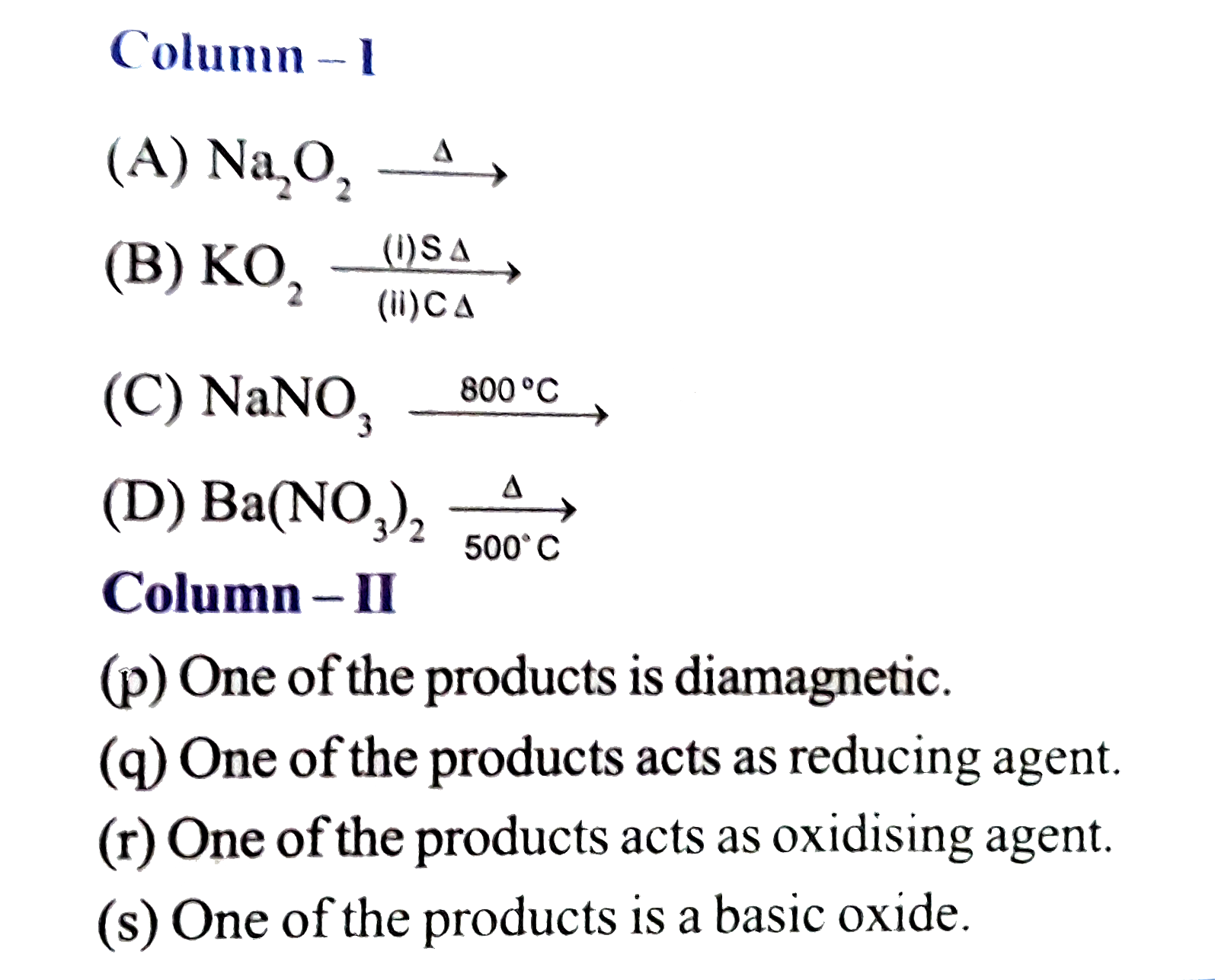 View Solution
View SolutionMatch the compounds listed in column -I with the characteristic(s) listed in column-II.
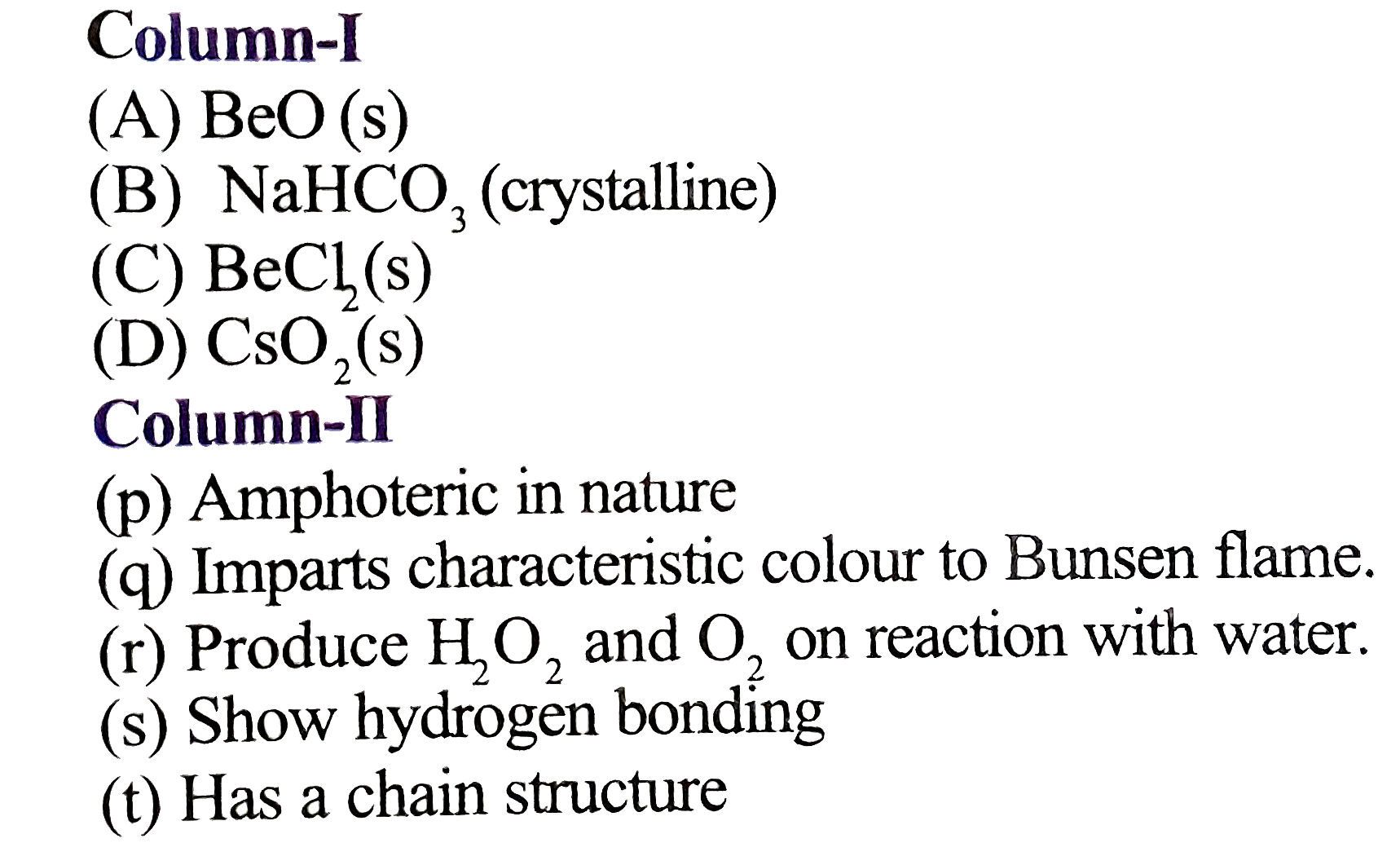 View Solution
View SolutionMatch the reactions listed in column(I) with characteristic(s) of the products/typee of reactions listed in column(II).
 .View Solution
.View SolutionMatch the compound listed in Column I with characteristic listed in Column II
 View Solution
View Solution


